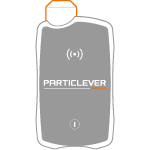Public transport


The issues of particle exposure in public transport are of concern both to professional employees of operating companies and passengers alike. The particles may be highly varied, and will depend on the type of transportation and the configuration of the locations.
Some situations are already known in order to have particular characteristics with respect to particles. This is true of subway tunnels, for which confined spaces concentrate particles, particularly those emitted by metal friction, as well as airport enclosures, where scientific publications have reported that commercial aircraft engines are one of the most-emissive sources measured in terms of the number of particles.
With respect to road transportation, exposure to diesel particles may be a matter of concern, particularly in polluted urban areas.
Key questions
Although the types of exposing particles are the same, the issue is completely different when measuring exposures. For transportation company employees, it's a professional level of exposure for which exposure times are long, with employers bearing particular responsibility. For passengers, it's not a professional environment, so the exposure times are short and less frequent. There are potentially at-risk populations like children, the elderly, or people with breathing difficulties. There results will be interpreted differently depending on the case.



